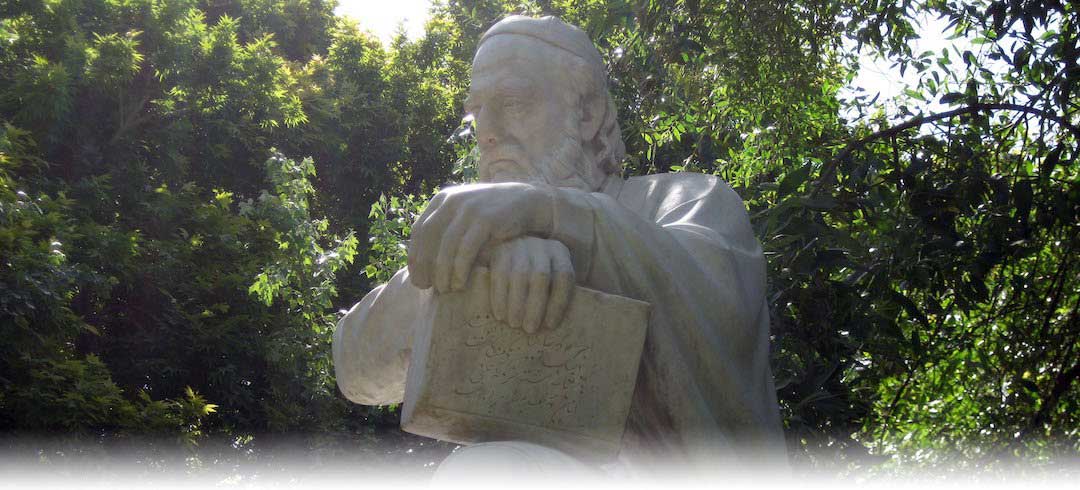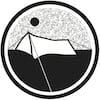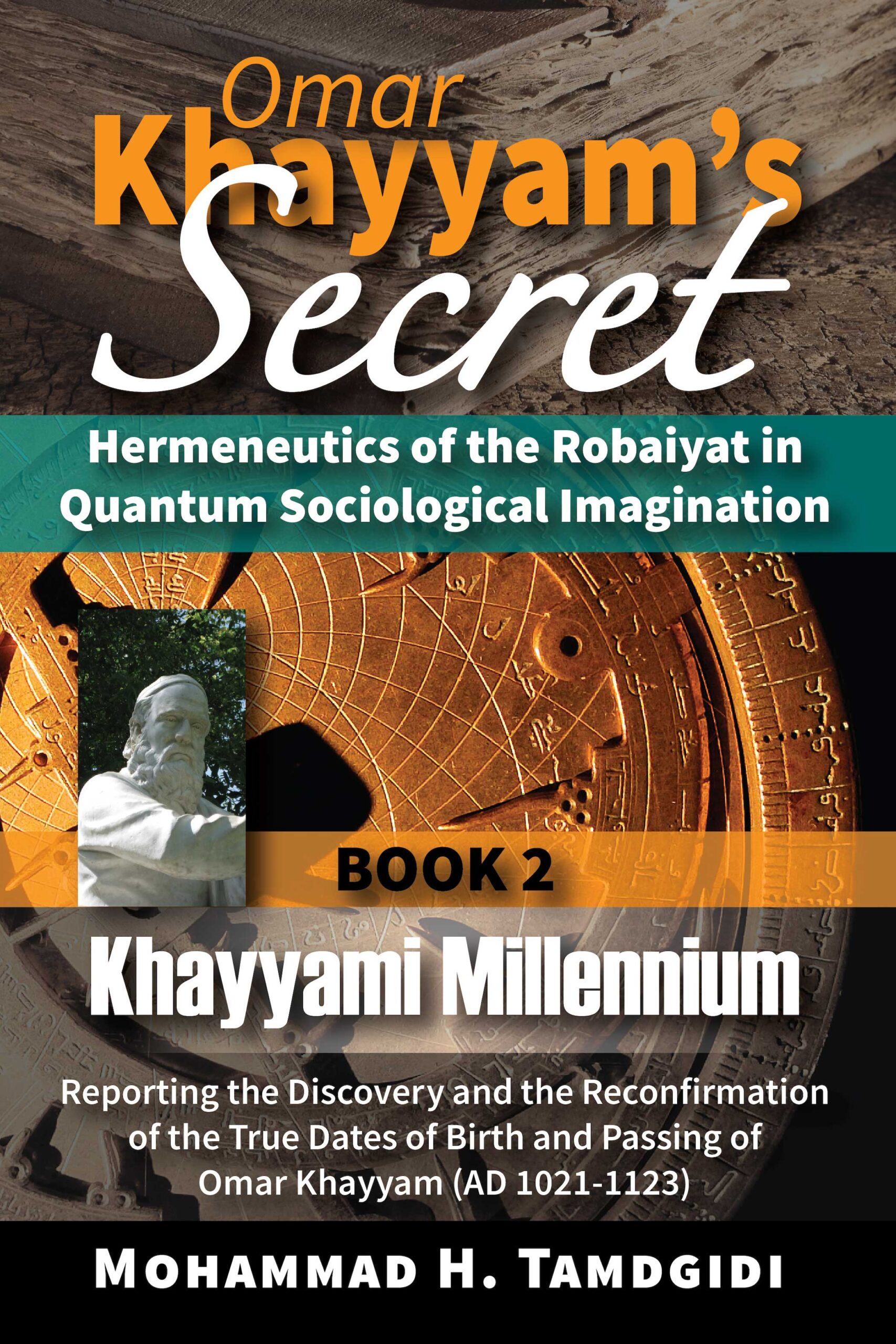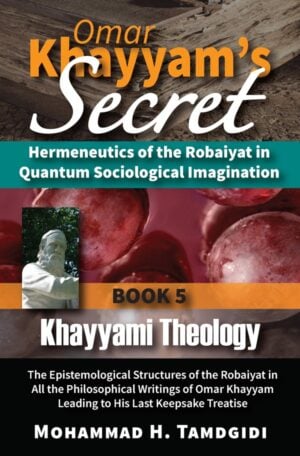Book Section: Preface and the Introduction to Book 2 of “Omar Khayyam’s Secret” Series: The Dilemma and Significance of Omar Khayyam’s Dates of Birth and Passing — by Mohammad H. Tamdgidi
$20.00
This book section includes the preface and and the introduction essays as described below. The essay, titled “Book 2 Preface: Recap From Prior Books of the Series” is an opening, and the essay titled “Introduction to Book 2: The Dilemma and Significance of Omar Khayyam’s Dates of Birth and Passing” is an introduction to the second book of the twelve-book series Omar Khayyam’s Secret: Hermeneutics of the Robaiyat in Quantum Sociological Imagination, authored by Mohammad H. Tamdgidi. The second book is subtitled Khayyami Millennium: Reporting the Discovery and the Reconfirmation of the True Dates of Birth and Passing of Omar Khayyam (AD 1021-1123).
Description
Abstract
This book section includes the preface and and the introduction essays as described below.
The essay, titled “Book 2 Preface: Recap From Prior Books of the Series,” is an opening to the second book of the twelve-book series Omar Khayyam’s Secret: Hermeneutics of the Robaiyat in Quantum Sociological Imagination, authored by Mohammad H. Tamdgidi. The second book is subtitled Khayyami Millennium: Reporting the Discovery and the Reconfirmation of the True Dates of Birth and Passing of Omar Khayyam (AD 1021-1123). It offers a summary, based on the section and chapter abstracts, of the first book of the series. The purpose of the preface is to provide the readers of the second book of the series a brief background about the major findings of the prior book(s) of the series.
In the overall series the author shares the results of his decades-long research on Omar Khayyam, the enigmatic 11th/12th centuries Persian Muslim sage, philosopher, astronomer, mathematician, physician, writer, and poet from Neyshabour, Iran, whose life and works still remain behind a veil of deep mystery. The purpose of Tamdgidi’s research has been to find definitive answers to the many puzzles still surrounding Khayyam, especially regarding the existence, nature, and purpose of the Robaiyat in his life and works. To explore the questions posed in the series, Tamdgidi advances a new hermeneutic method of textual analysis, informed by what he calls the quantum sociological imagination, to gather and study all the attributed philosophical, religious, scientific, and literary writings of Khayyam.
In the first book of the series, subtitled New Khayyami Studies: Quantumizing the Newtonian Structures of C. Wright Mills’s Sociological Imagination for A New Hermeneutic Method, following a common preface and introduction to the series, Tamdgidi developed the quantum sociological imagination method framing his hermeneutic study in the series as a whole. In the prefatory note he shared the origins of this study and how the study is itself a moment in the trajectory of a broader research project. In his introduction, he described how centuries of Khayyami studies, especially during the last two, have reached an impasse in shedding light on his enigmatic life and works, especially his attributed Robaiyat.
The four chapters of the first book were then dedicated to developing the quantum sociological imagination as a new hermeneutic method framing the Khayyami studies in the series. The method builds, in an applied way, on the results of Tamdgidi’s recent work in the sociology of scientific knowledge, Liberating Sociology: From Newtonian Toward Quantum Imagination: Volume 1: Unriddling the Quantum Enigma (2020), where he explored extensively, in greater depth, and in the context of understanding the so-called “quantum enigma,” the Newtonian and quantum ways of imagining reality.
In the first book, he shared the findings of that research in summary amid new applied insights developed in relation to Khayyami studies. In the first chapter, Tamdgidi raised a set of eight questions about the structure of C. Wright Mills’s sociological imagination as a potential framework for Khayyami studies. In the second chapter, he showed how the questions are symptomatic of Newtonian structures that still continue to frame Mills’s sociological imagination. In the third chapter, the author explored how the sociological imagination can be reinvented to be more in tune with the findings of quantum science. In the last chapter, the implications of the quantum sociological imagination for devising a hermeneutic method for new Khayyami studies were outlined. In conclusion, the findings of the first book of the Omar Khayyam’s Secret series were summarized.
The second book of the Omar Khayyam’s Secret that follows is dedicated to exploring in depth the hitherto findings and controversies surrounding the dates of birth and passing of Omar Khayyam.
The essay, titled “Introduction to Book 2: The Dilemma and Significance of Omar Khayyam’s Dates of Birth and Passing,” is an introduction to the second book of the twelve-book series Omar Khayyam’s Secret: Hermeneutics of the Robaiyat in Quantum Sociological Imagination, authored by Mohammad H. Tamdgidi. The second book is subtitled Khayyami Millennium: Reporting the Discovery and the Reconfirmation of the True Dates of Birth and Passing of Omar Khayyam (AD 1021-1123).
In recent decades, an uneasy consensus has generally emerged in Khayyami studies and public media regarding the dates of birth and passing of Omar Khayyam. Nowadays, one can readily find various online, bibliographic, encyclopedic, academic, or other published sources stating that Khayyam was born on Thursday, May 18, AD 1048, and died on Friday, December 4th, AD 1131. Such dates are then celebrated or commemorated according to the solar Gregorian Christian calendar used today in the West.
Obviously, the determination of the exact dates for Omar Khayyam’s birth and passing, which would then identify the exact historical period during which he lived (marked by rapidly changing events, rulers, and personalities), is vital for any adequate and realistic research on his life and works amid the broader context of his times.
Studying the interplay between personal troubles and broader public issues involving Khayyam’s life in a quantum sociological imagination framework (as introduced in the preceding, first book of this series) requires such a careful determination of the outer boundaries of the chronology of his life and works in relation to those of his contemporaries amid local, regional, and broader world-history contexts. An accurate determination of the dates of Khayyam’s birth and passing can provide significant information about more exact intersections of various periods of his biography with those of others amid the tumultuous times during which one or another of his writings, including his poetry, if any, may have been composed.
However, the uneasy consensus on Khayyam’s dates of birth and passing as noted above is not a universally settled matter. The uneasy consensus today regarding Khayyam’s birth date, if not exactly his date of passing, is rooted in a specific piece of biographical information passed on from his contemporaries to the present: his birth horoscope, or natal chart. In this regard, the study by the Indian scholar Swāmī Govinda Tīrtha is of singular importance.
Amid his major study of Omar Khayyam’s life and writings in his The Nectar of Grace: Omar Khayyām’s Life and Works (1941), one that included studies and translations of several excerpts of the philosophical (not scientific) writings and (his own) free verse translations of quatrains attributed to Khayyam, Tīrtha proposed a way of calculating Khayyam’s birth date based on the horoscope of his birth handed down in a manuscript of biographical entries by the scholar of medieval Islamic period and Khayyam contemporary (as a young child) Zahireddin Abolhasan Beyhaqi, titled Tatemmat Sewan el-Hekmat (Supplement to the Chest of Wisdom).
We owe to Swāmī Govinda Tīrtha the wonderful idea of determining the date of birth of Khayyam through a study of his birth horoscope, and his efforts at determining Khayyam’s date of passing also offer ideas that can shed helpful lights toward solving that question as well. However, we should keep in mind that the soundness of the way he went about determining those dates based on the way he interpreted and analyzed the horoscope and other sources using the specific manuscript copies he had at hand is a completely different matter, worthy of critical revisitation.
In the introduction, some preliminary information about the nature of the Islamic lunar and Iranian Islamic solar calendars as well as Gregorian and Julian Western calendars are provided, while an overview of Khayyam’s tombstones and their inscriptions are also shared. Tamdgidi then states his purpose in this second book of the Omar Khayyam’s Secret series to be as follows: (1) to carefully and critically revisit Swāmī Govinda Tīrtha’s study of Khayyam’s horoscope which lies at the very source of the prevailing uneasy consensus today regarding the dates of birth and death of Omar Khayyam; and, if Tīrtha’s findings are verifiably proven to be wrong, (2) to offer an alternative solution to the determination of the true dates of birth (and by implication and further investigation, passing) of Omar Khayyam by way of careful reexamination of that horoscope.
Recommended Citation
Tamdgidi, Mohammad H. 2021. “Preface on the Origins of and Introduction to the Series: The Enigmatic Omar Khayyam and the Impasse of Khayyami Studies.” Pp. 1-26 in Omar Khayyam’s Secret: Hermeneutics of the Robaiyat in Quantum Sociological Imagination: Book 2: Khayyami Millennium: Reporting the Discovery and the Reconfirmation of the True Dates of Birth and Passing of Omar Khayyam (AD 1021-1123). (Human Architecture: Journal of the Sociology of Self-Knowledge: Vol. XV, 2021. Tayyebeh Series in East-West Research and Translation.) Belmont, MA: Okcir Press.
Where to Purchase Complete Book: The various editions of the volume of which this Book Section is a part can be ordered from the Okcir Store and all major online bookstores worldwide (such as Amazon, Barnes&Noble, Google Play, and others).
Read the Above Publication Online
To read the above publication online, you need to be logged in as an OKCIR Library member with a valid access. In that case just click on the large PDF icon below to access the publication. Make sure you refresh your browser page after logging in.








